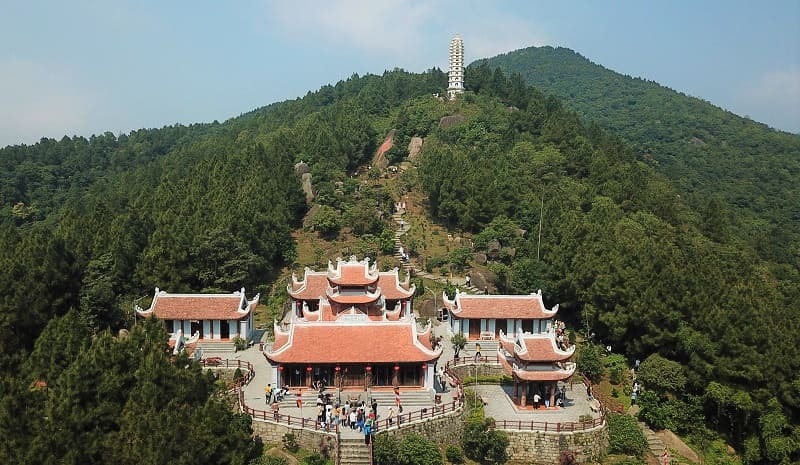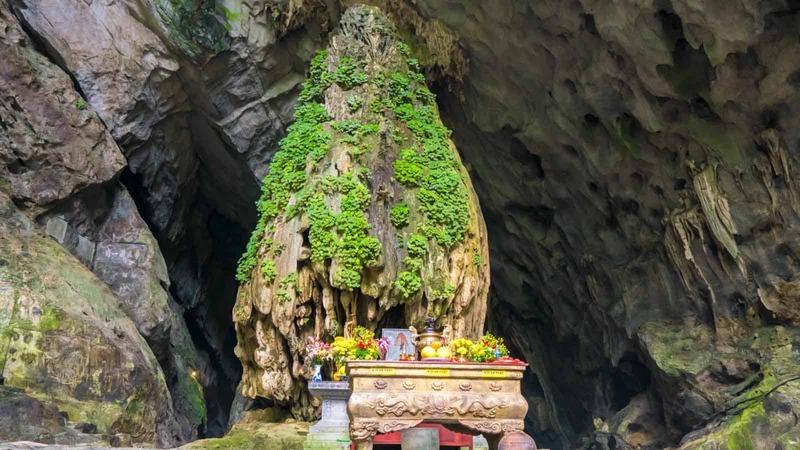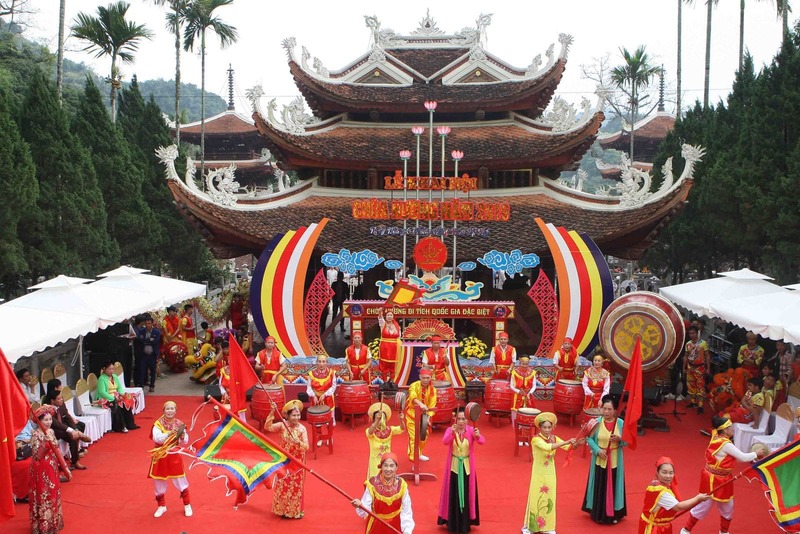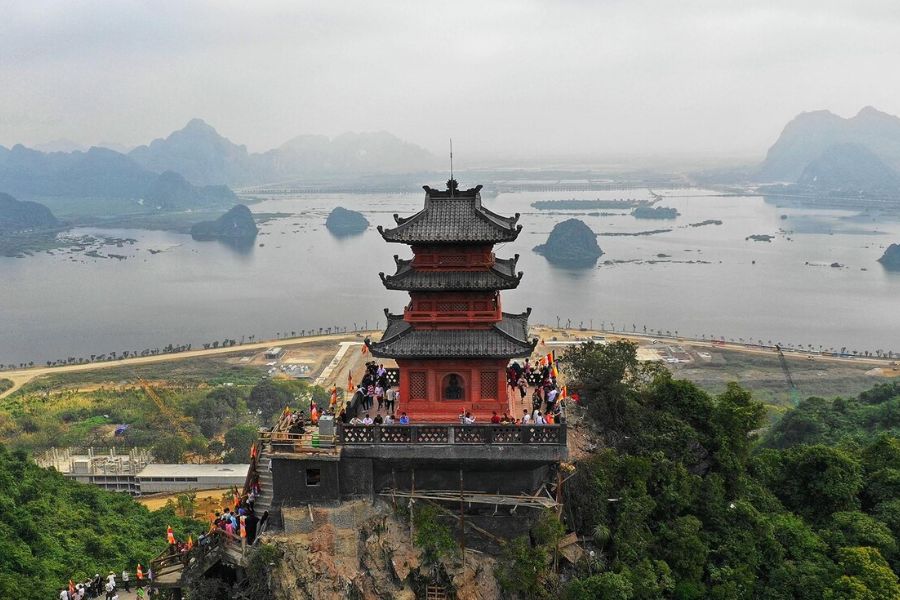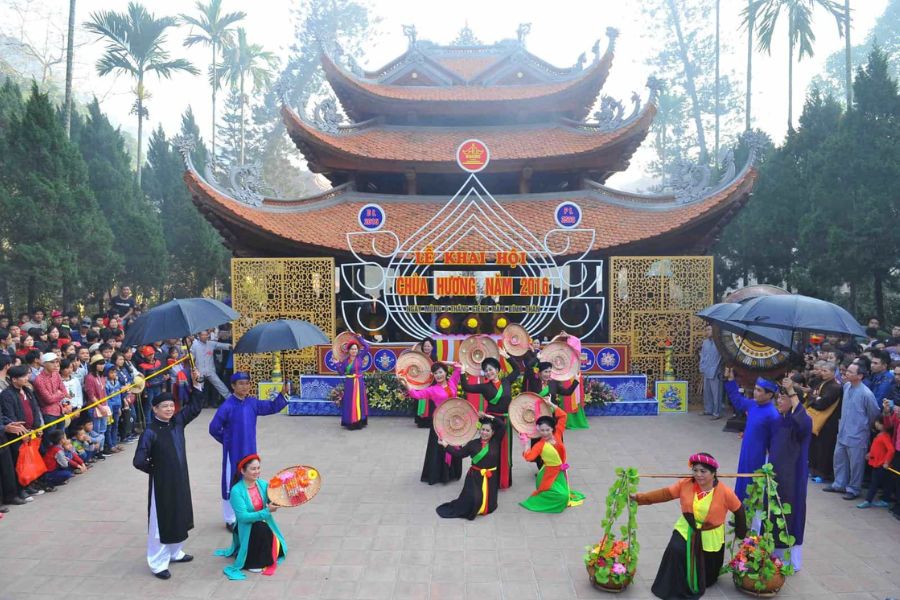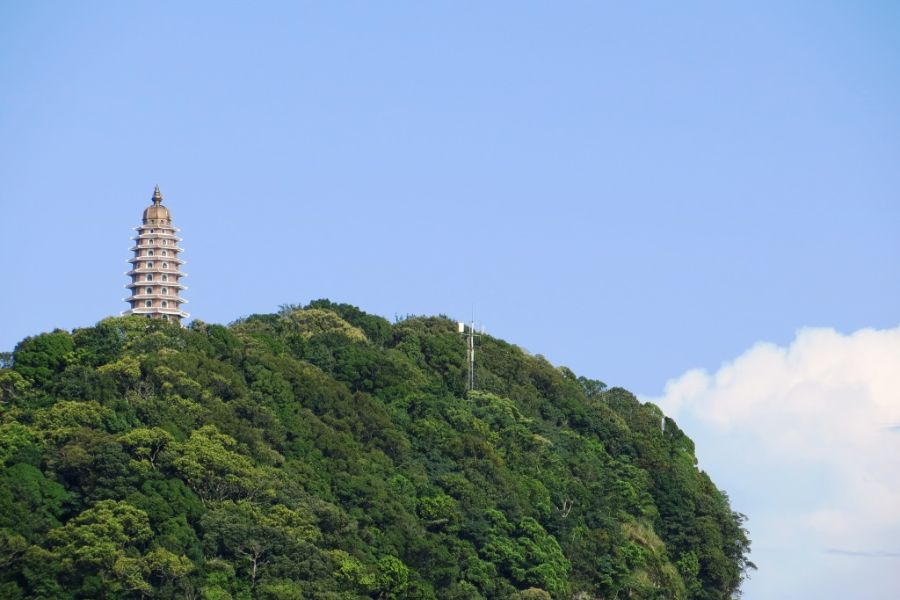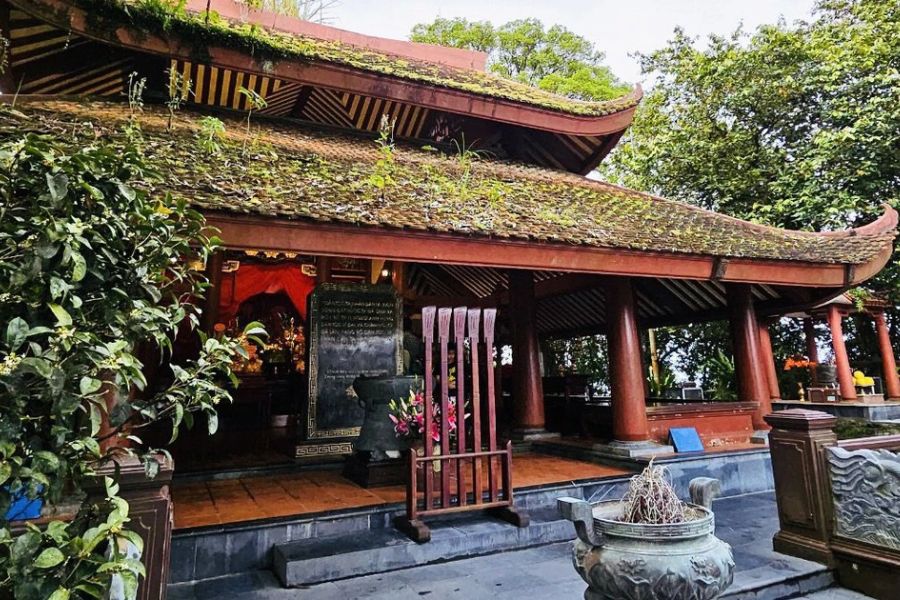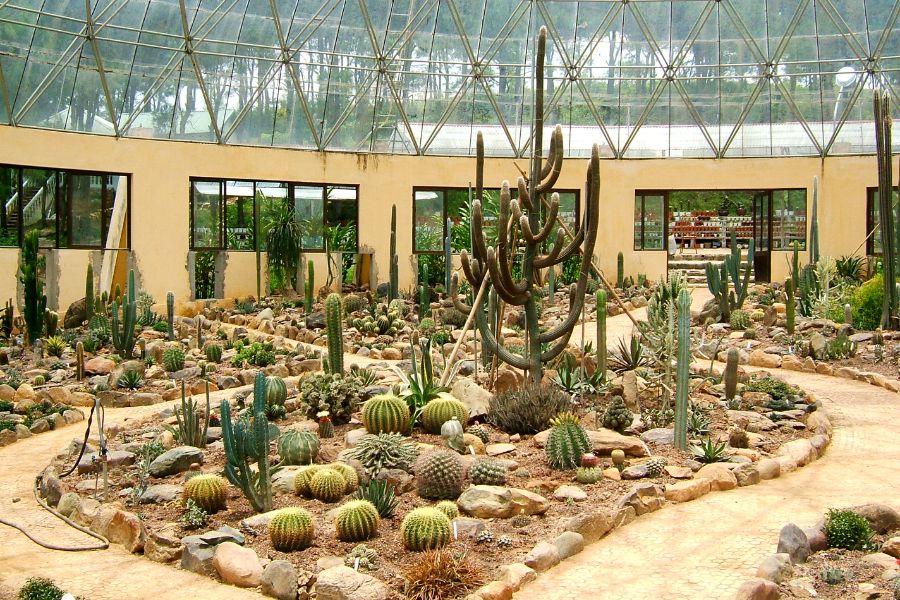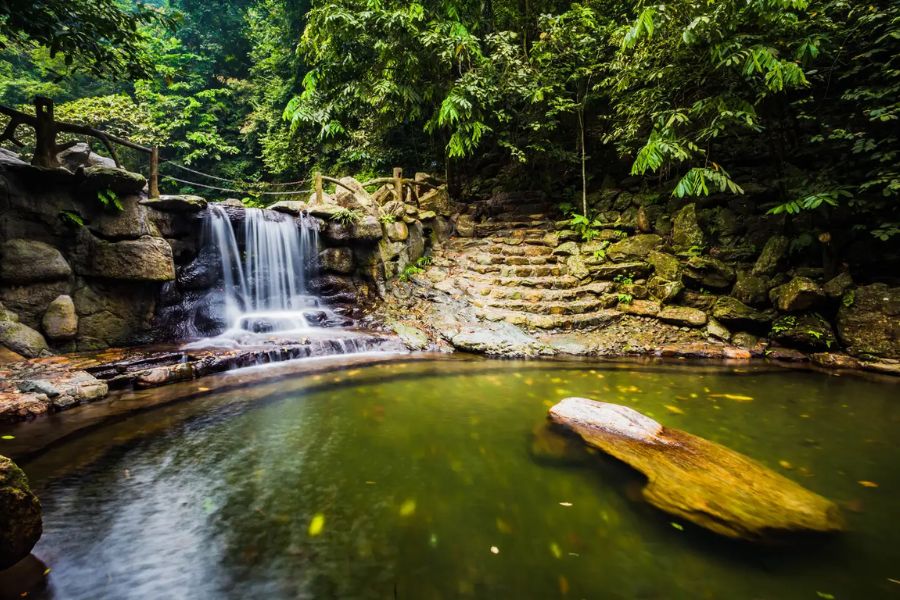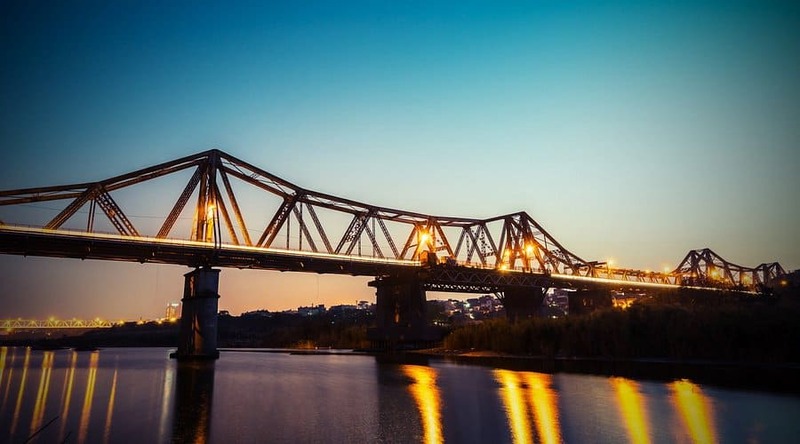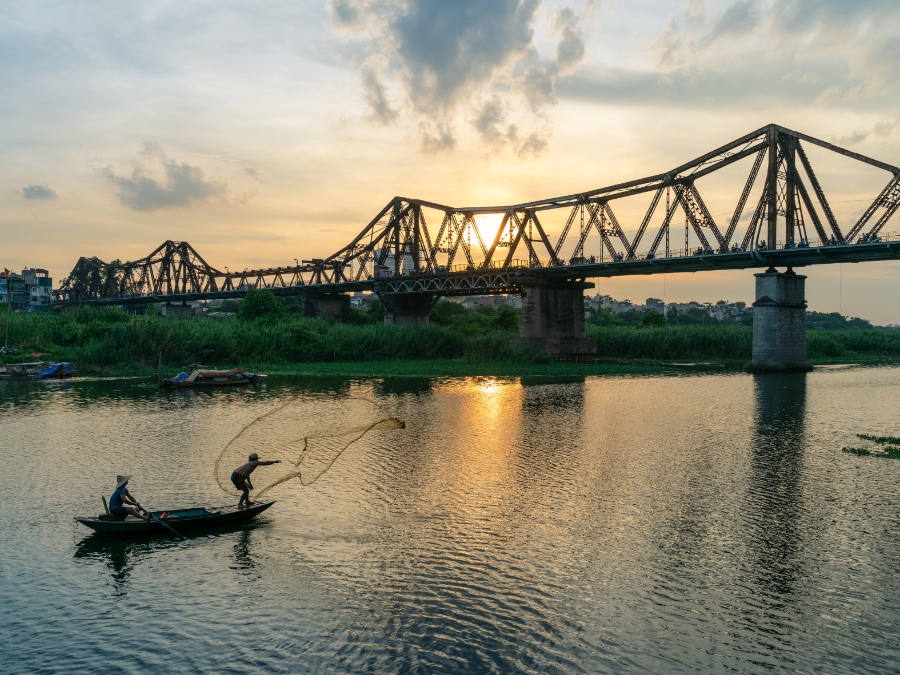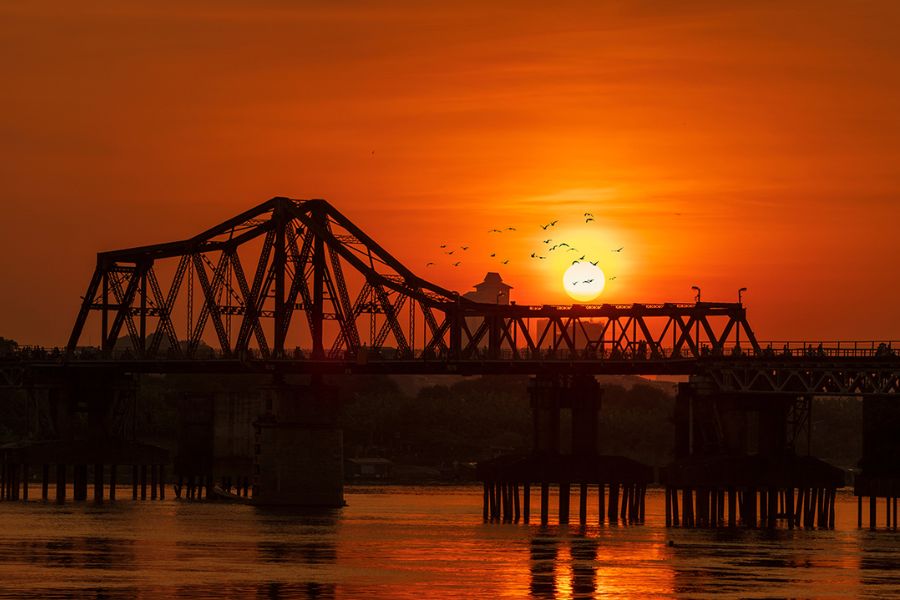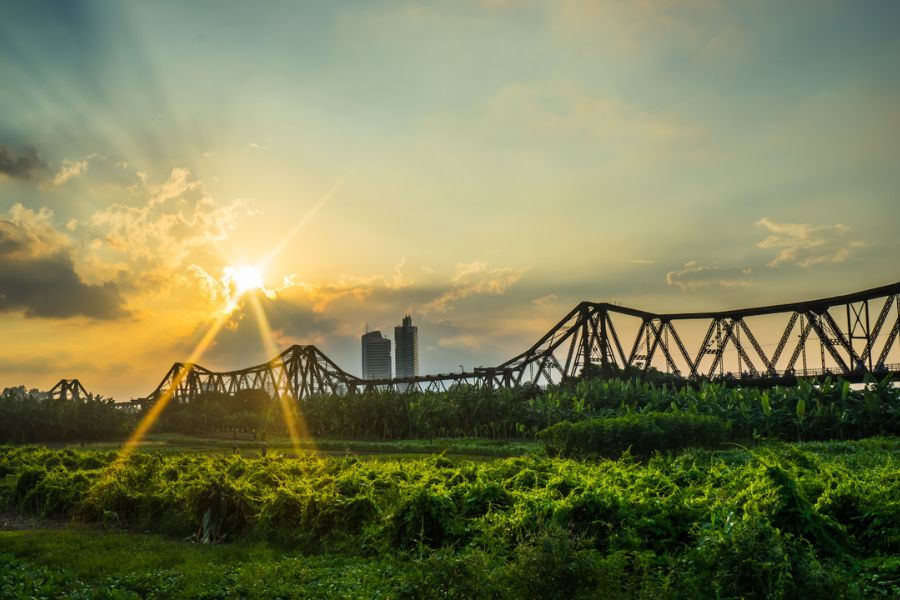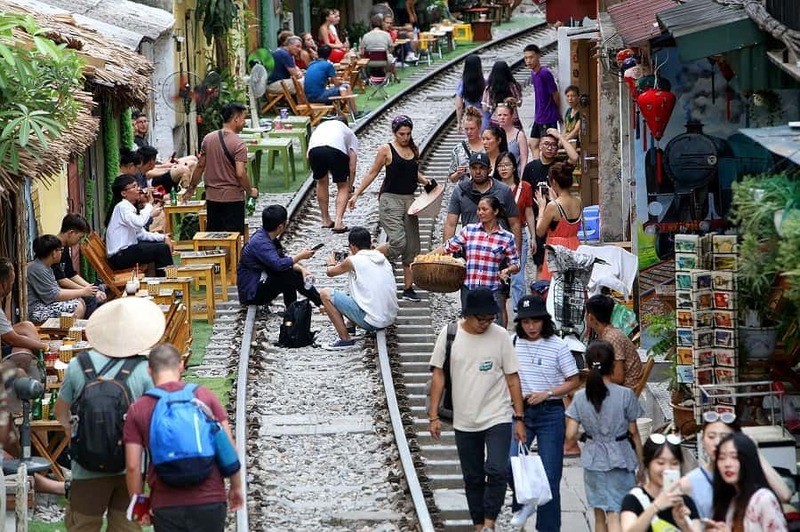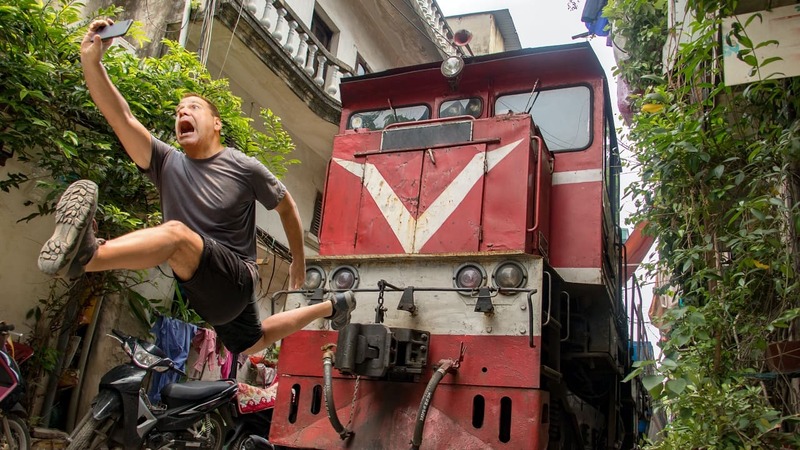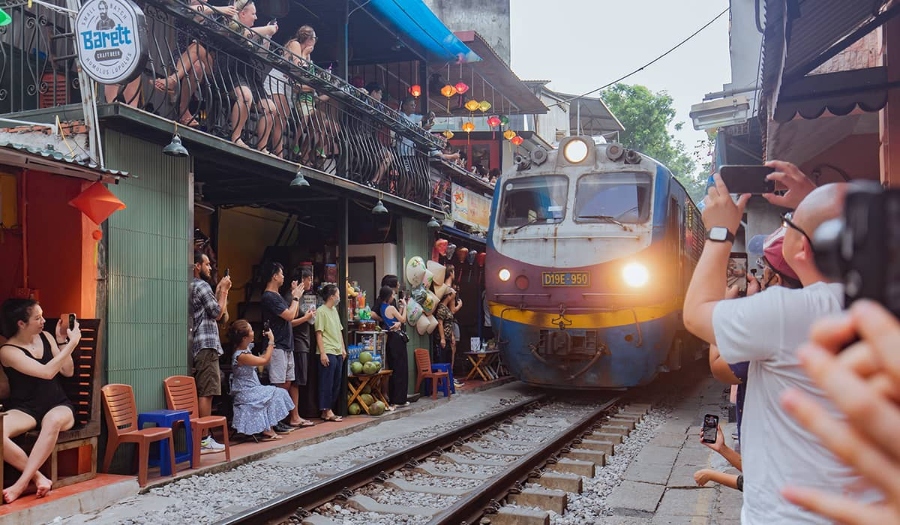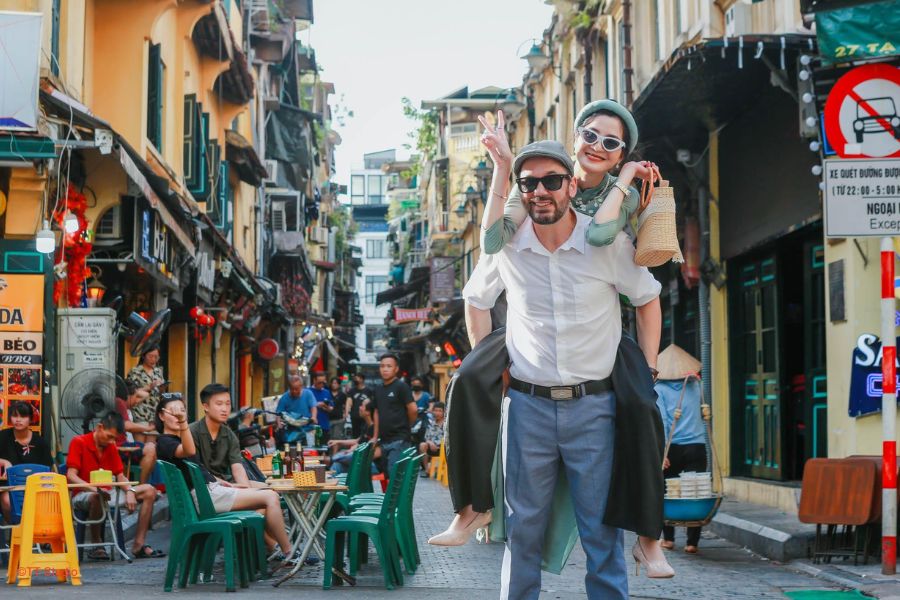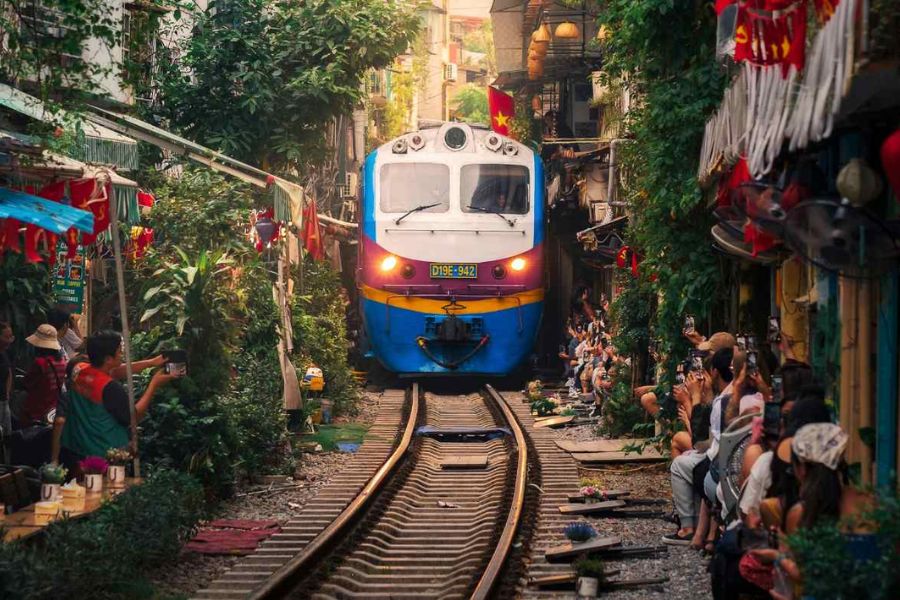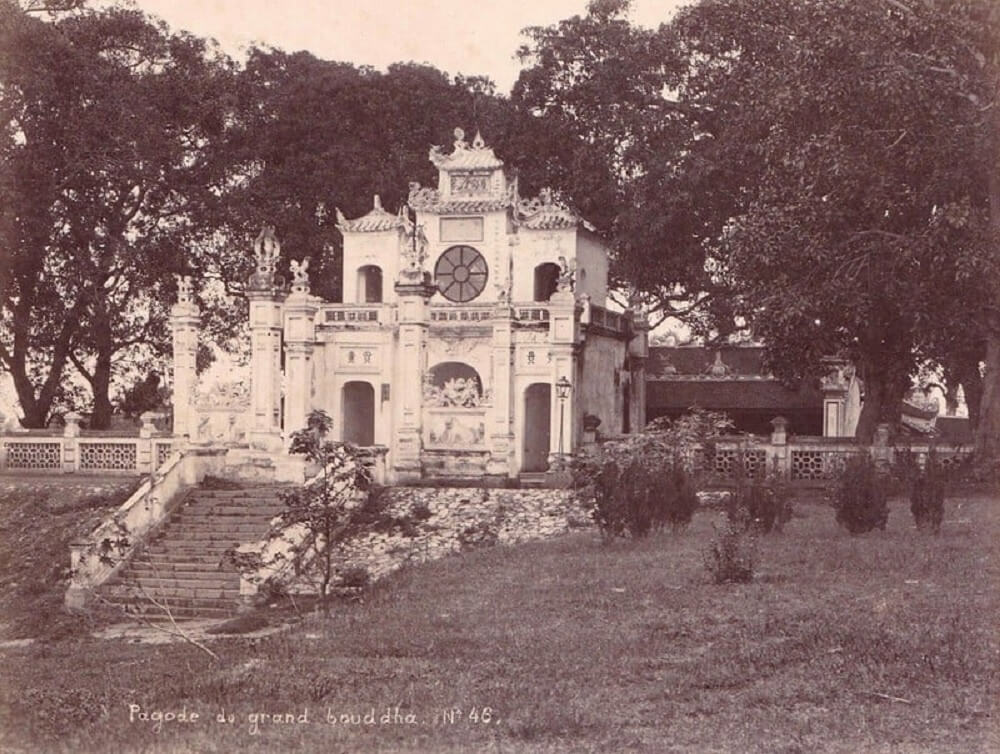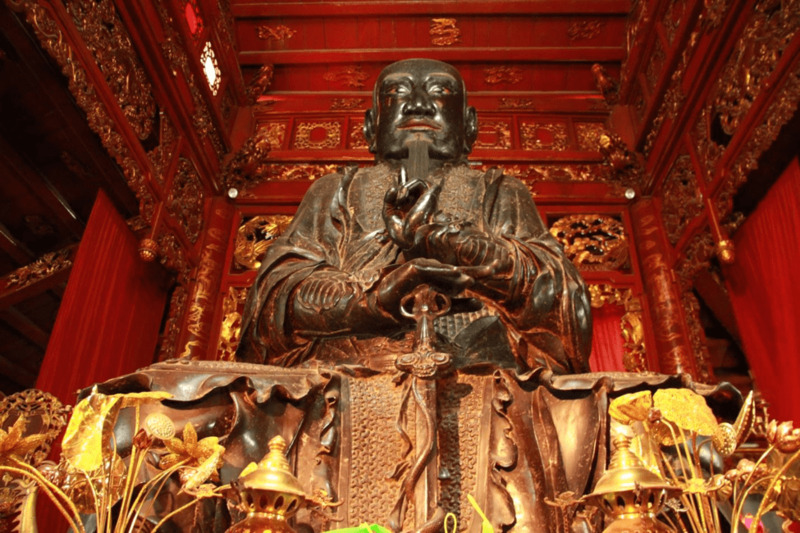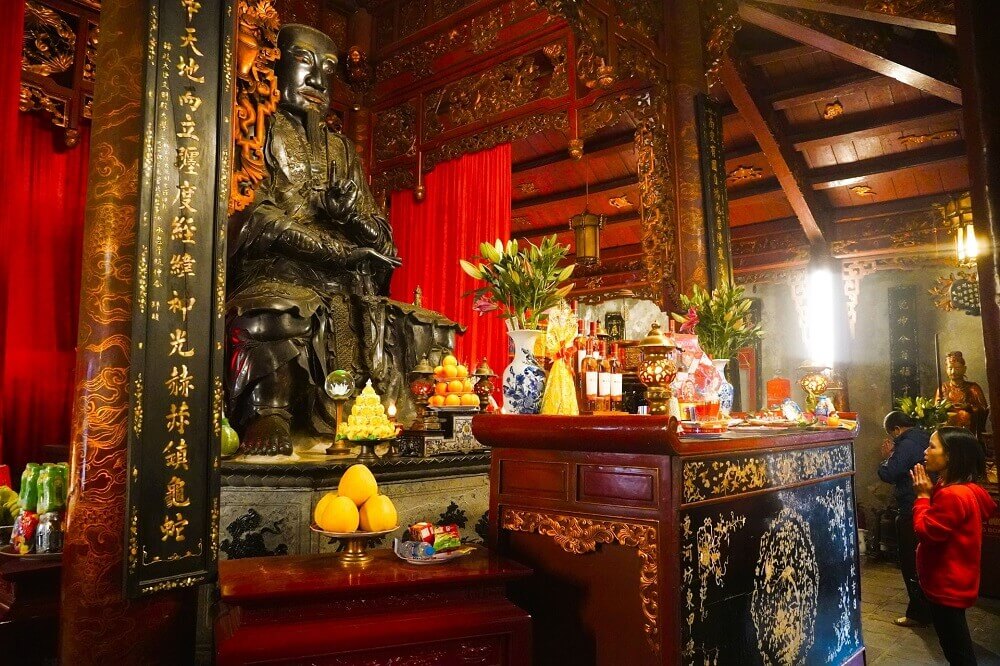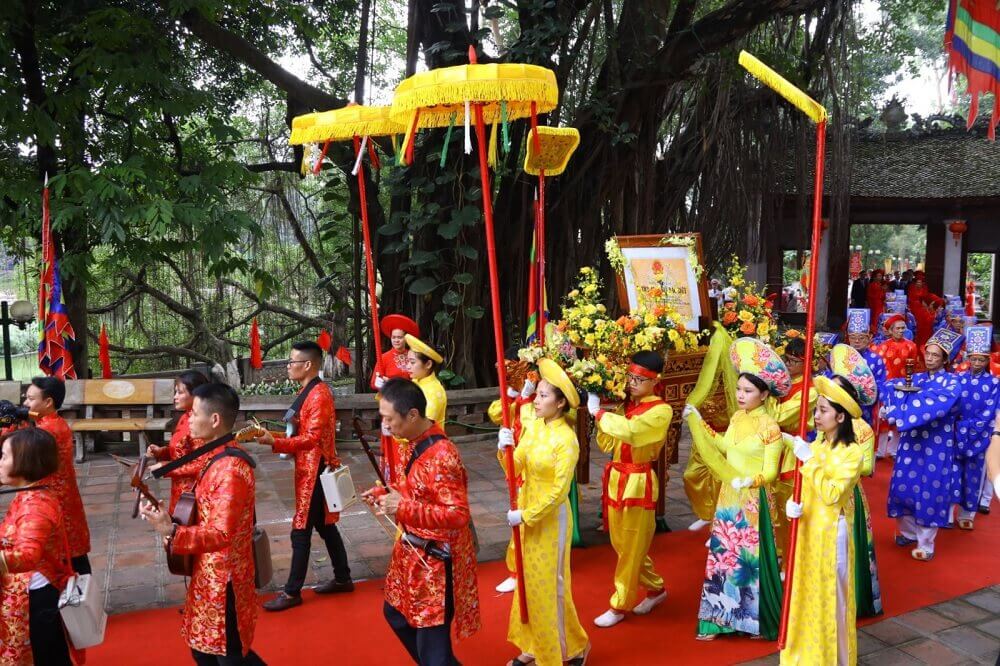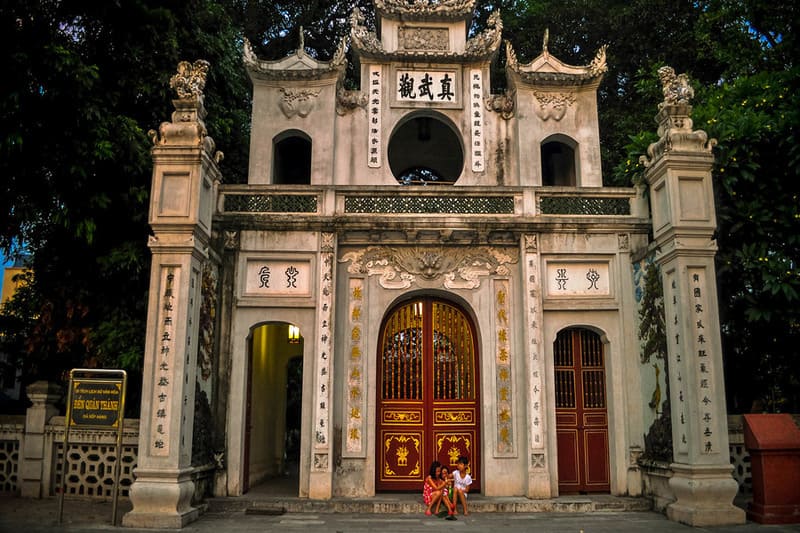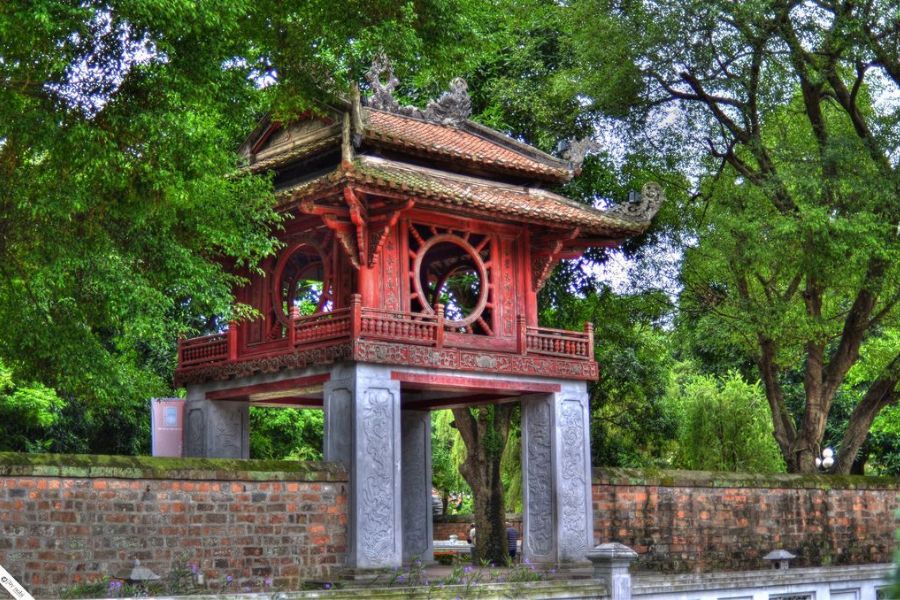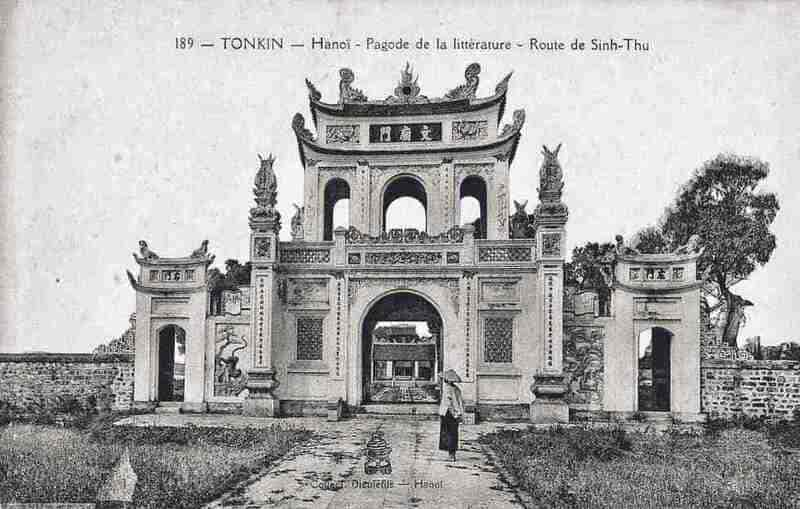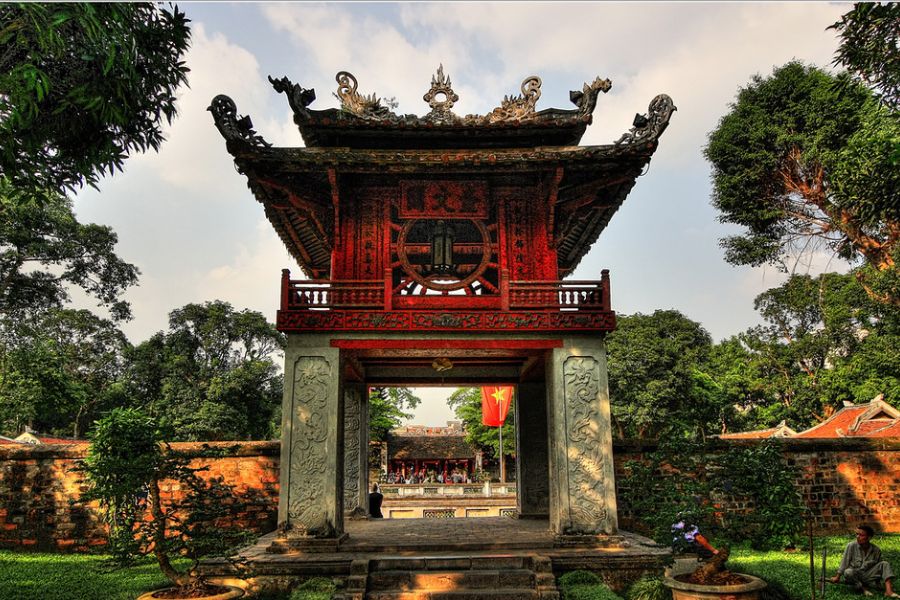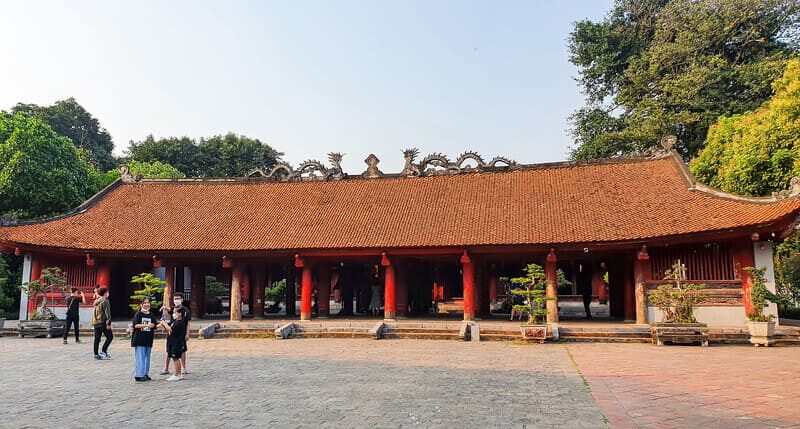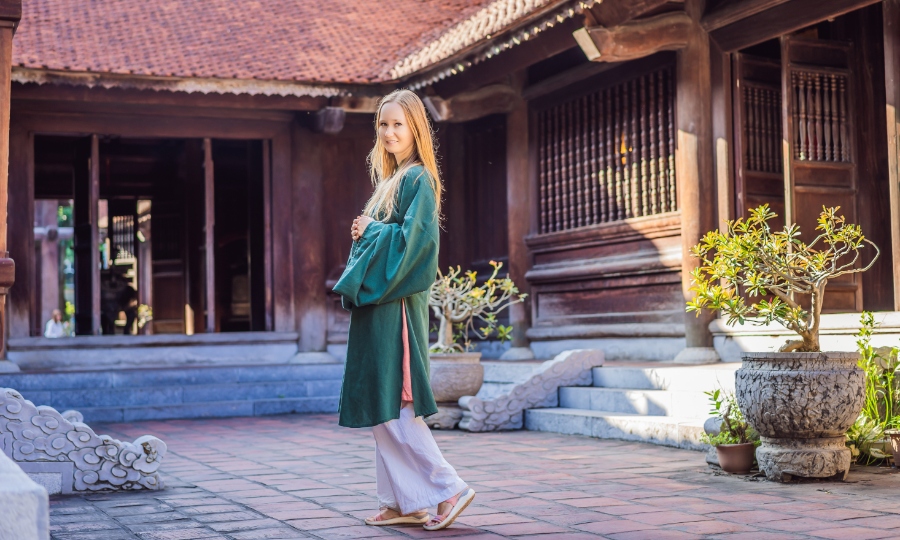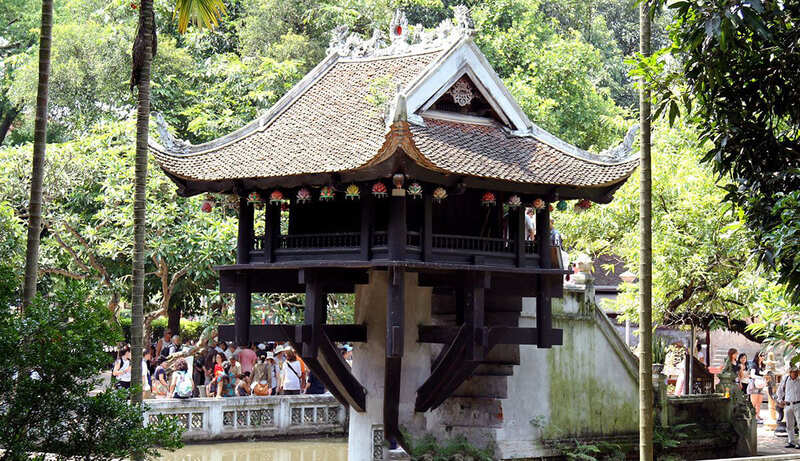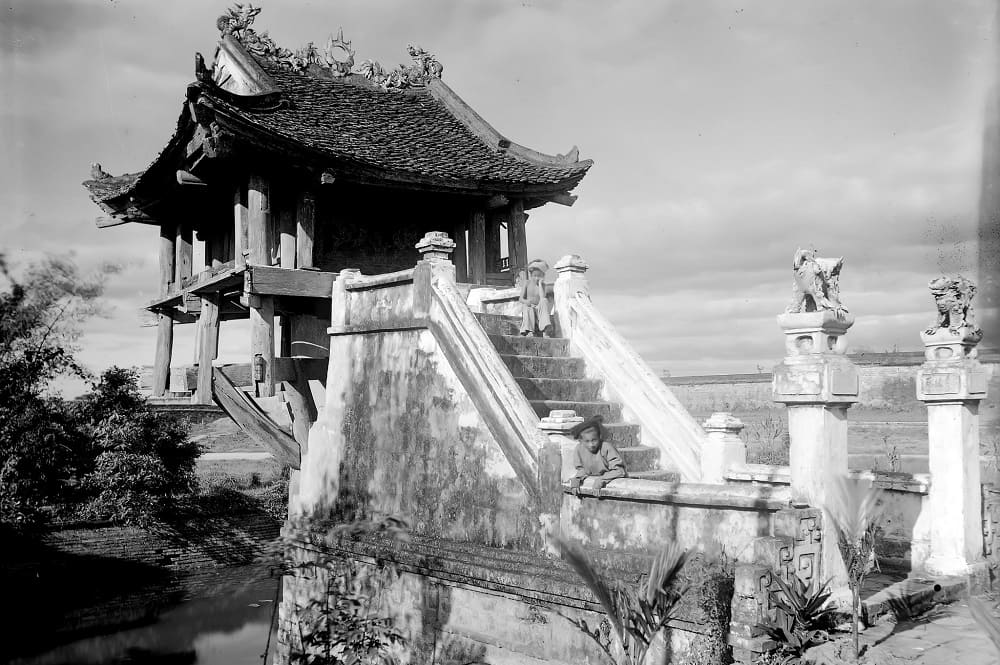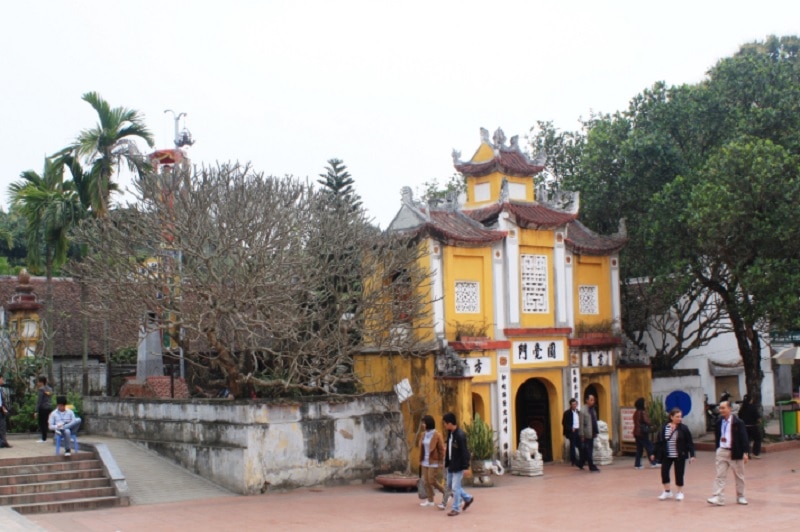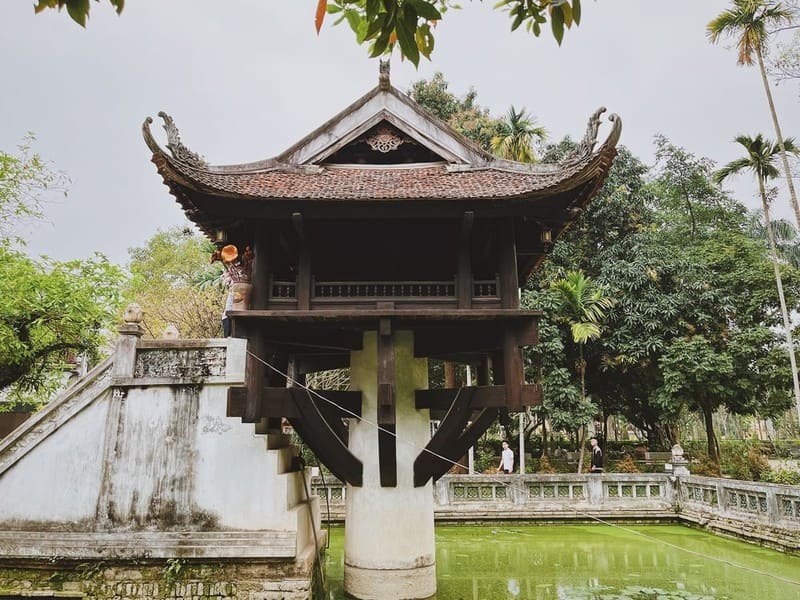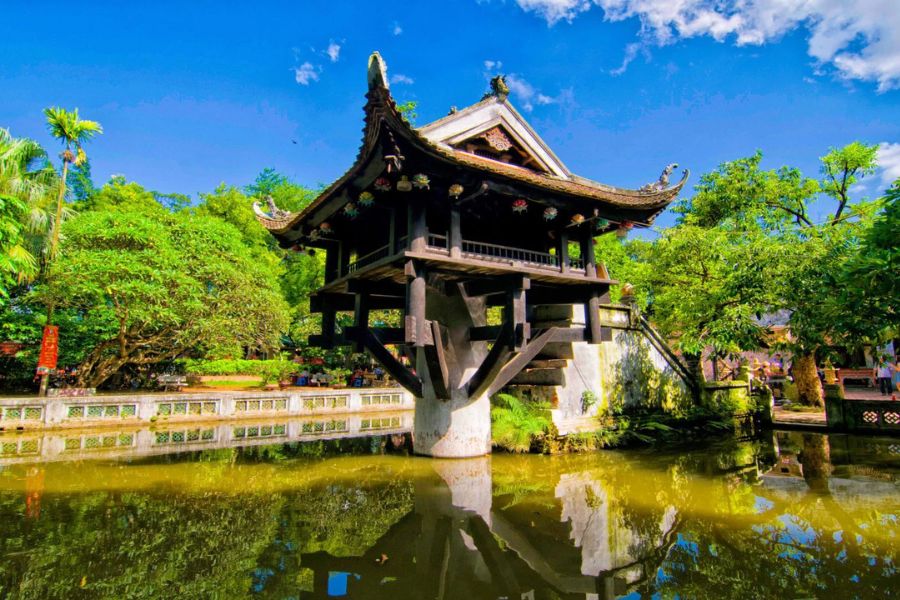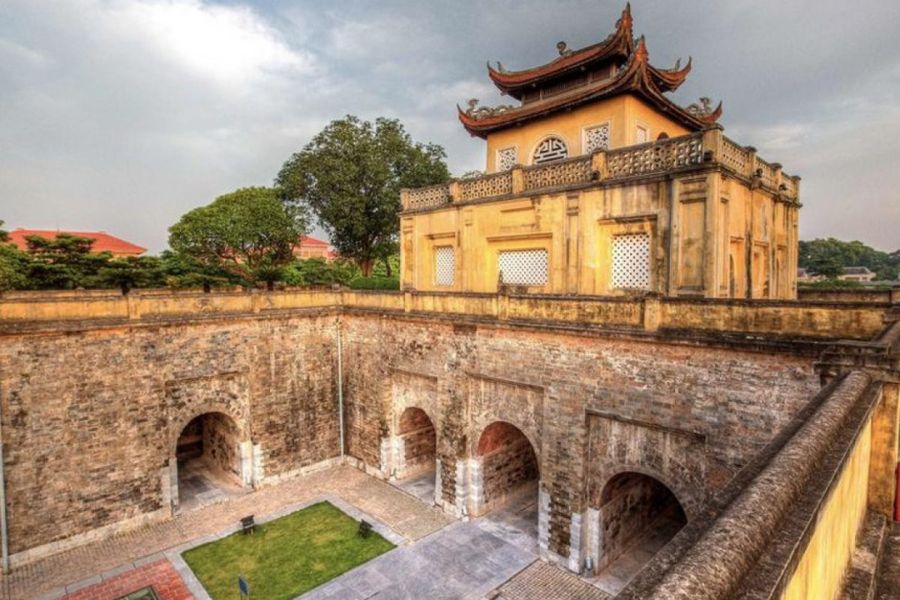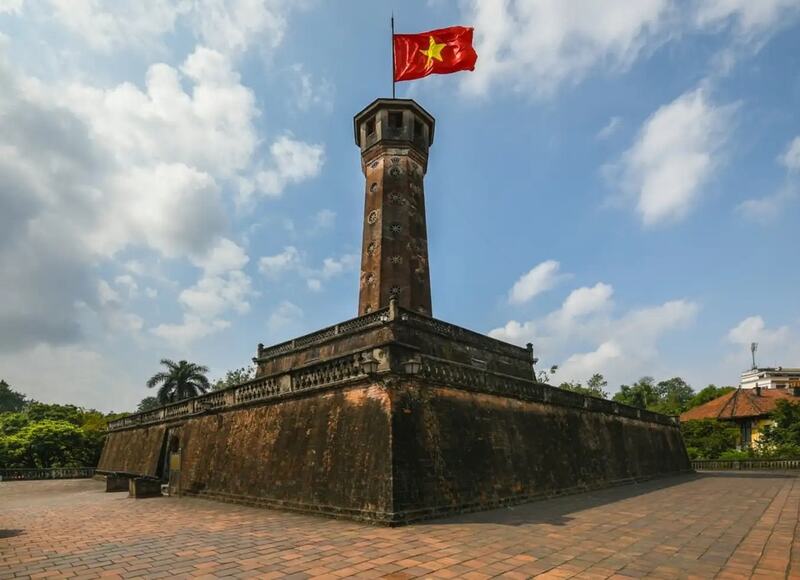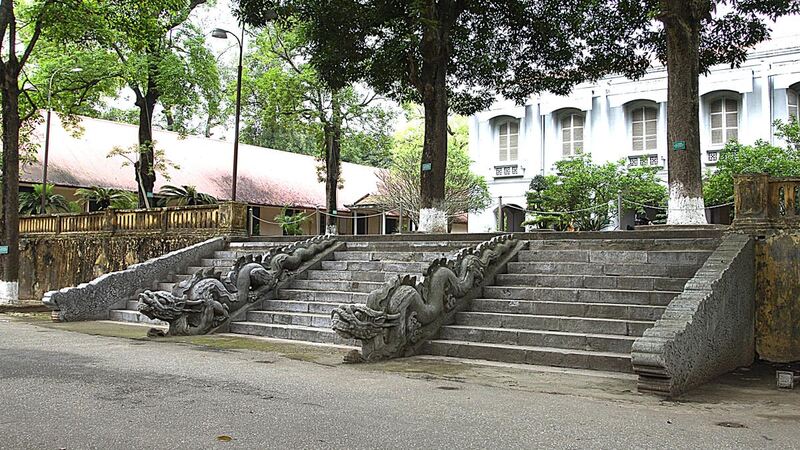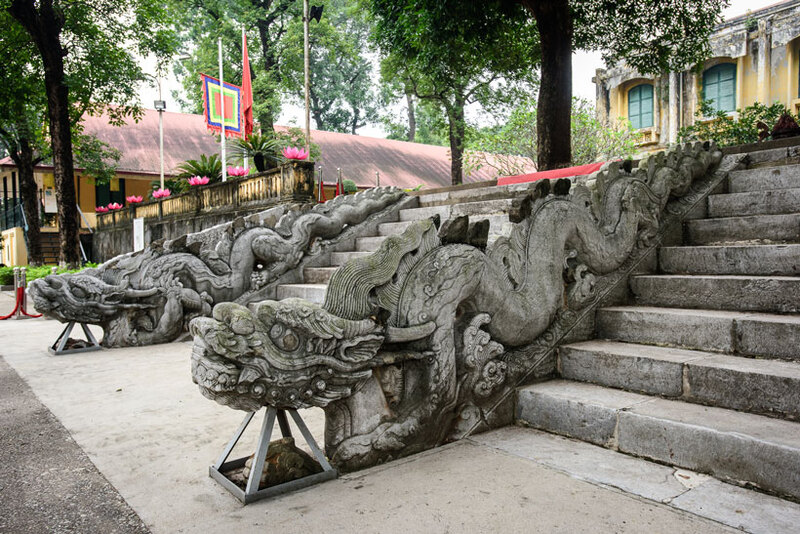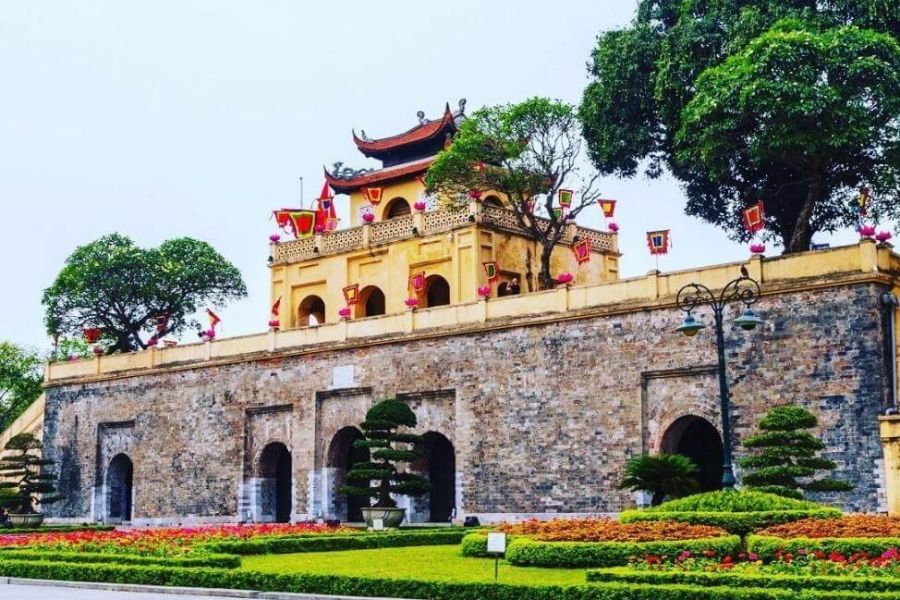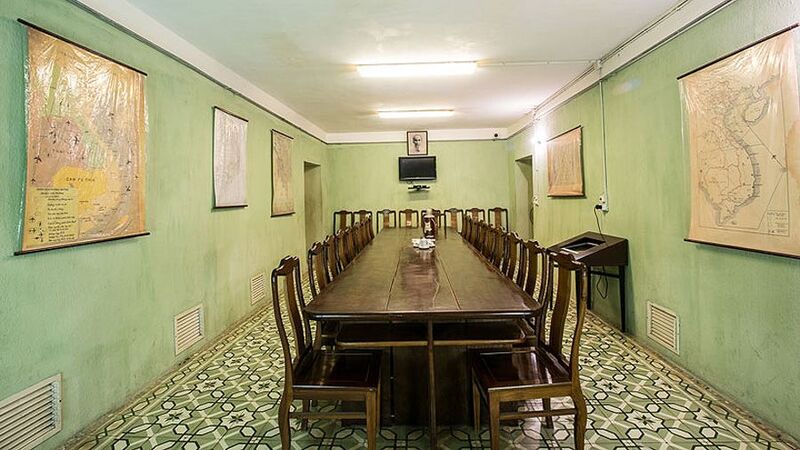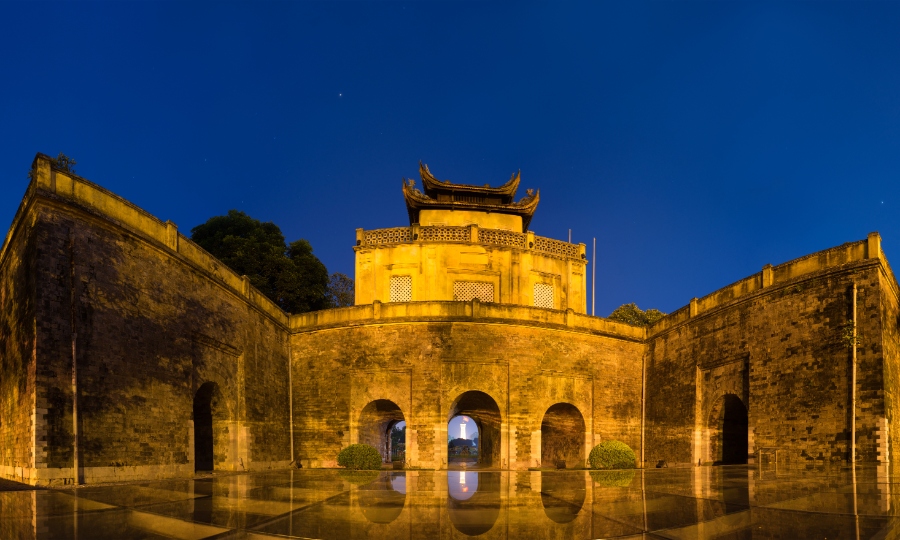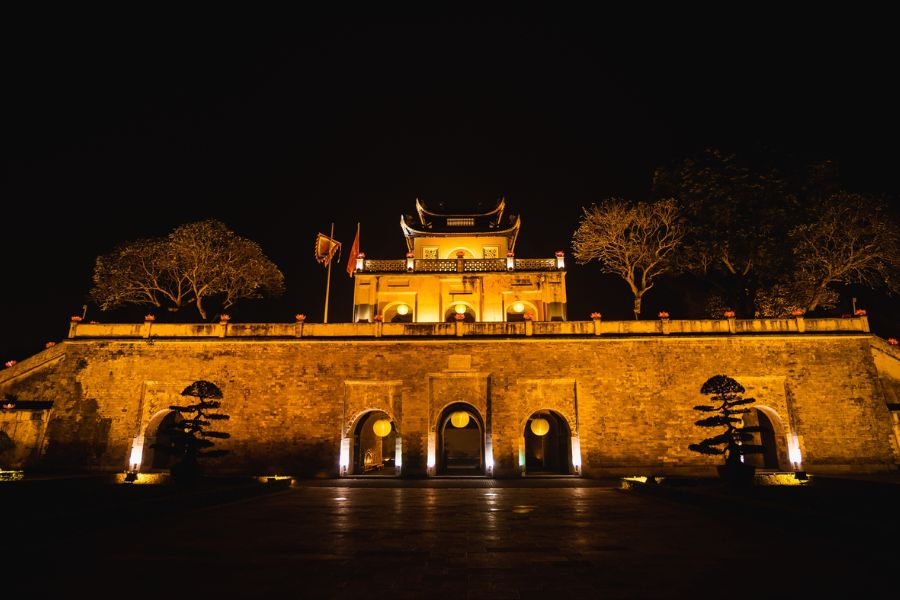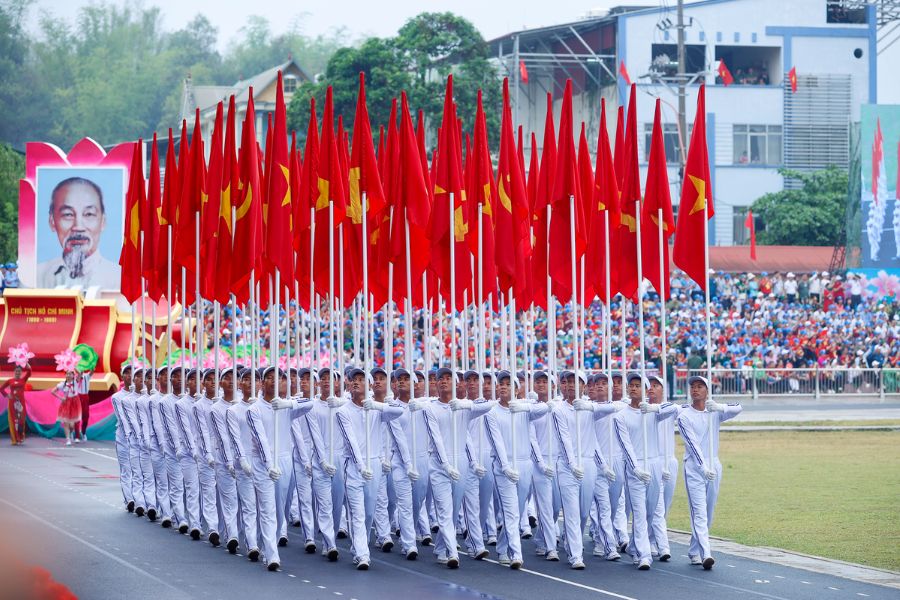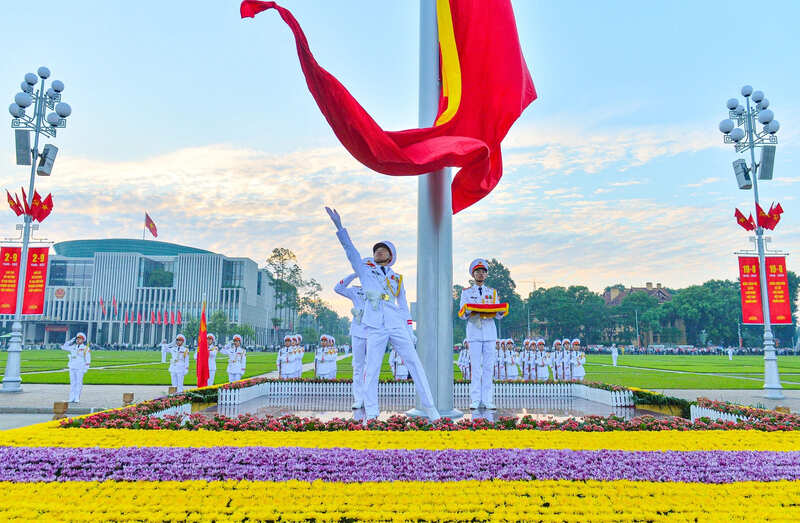Hanoi Museum Guide: History, Architecture, and Tips
If you’re interested in the history of Vietnam, check out the Hanoi Museum. The Hanoi museum building extends 50,000 square meters. It includes artifacts, photographs, and dioramas showing how the Vietnamese people lived and built houses.
Introduction To The Hanoi Museum
The Hanoi Museum is an increasingly popular cultural destination in the city. It contains thousands of objects and papers on the history, population, and customs of Vietnam. The museum presents day-to-day life, the time from ancient to present, history, and the phases of time.
Guests will be able to see how Vietnam developed over time. The museum has everything from everyday life to royal families. So when you come to Hanoi, do not forget to include this museum in your must-do list. For an immersion into Vietnamese culture and history, this is the spot.
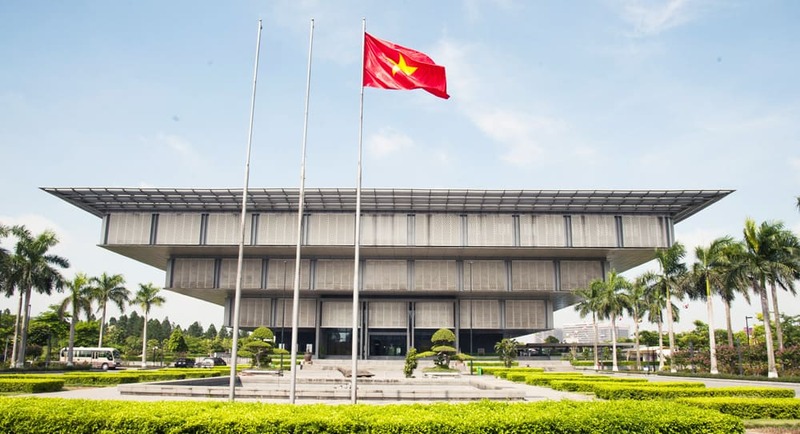
History Of The Hanoi Museum
The Hanoi Museum was opened to mark the 1,000th anniversary of Thang Long – Hanoi. It was constructed to house the rapidly growing collections of antique artefacts from Hanoi and anywhere else in or around Hanoi. Before 2010, these collections were kept at the former museum on Ly Thuong Kiet Street. That building became too small.
So the government constructed a new Hanoi Museum, and Vietnamese architects and a German firm collaborated on the design of the building. The museum has expanded to more than 54,000 square meters. It hosts numerous performances and temporary exhibits. Today, like then, it is one of the better places to learn history and be reminded of the identity of the capital.
Unique Architecture Of Hanoi Museum
There are many things that will definitely impress you when coming to the Hanoi Museum. The design of this building is a work of art. Here are the unique features of Hanoi Museum architecture.
The Iconic Inverted Pyramid Design
The Hanoi Museum’s most unusual feature is its impressive inverted pyramid shape. Its original architectural accomplishment is what earns it immediate attention. Not just downright pretty, this design references Hanoi’s long history, but represents its rapid growth in metaphor. Each floor in the museum is larger than the one above. This creates space for exhibits and fosters a sense of openness.
![]()
Smart Use Of Building Materials
The building is constructed of glass and steel among other modern materials, for a more contemporary look. It’s tradition, it’s Vietnamese, a blending of what’s new and what’s old. On the exterior are large sheets of reflective glass that mirror the surrounding terrain and sky. It results in a dynamic facade that looks different in daytime and in different weather conditions.
The Grand Central Atrium
Among the offerings is the generous central atrium. Open up This unenclosed area brings in natural light and creates a light airy space. It also serves as a hub between several galleries.
Coherent Combination With Landscape Design
Even the landscaping at the museum is designed to complement the architecture. The museum is extremely enjoyable both inside and outside – the gardens, ponds, and paths exude tranquillity.
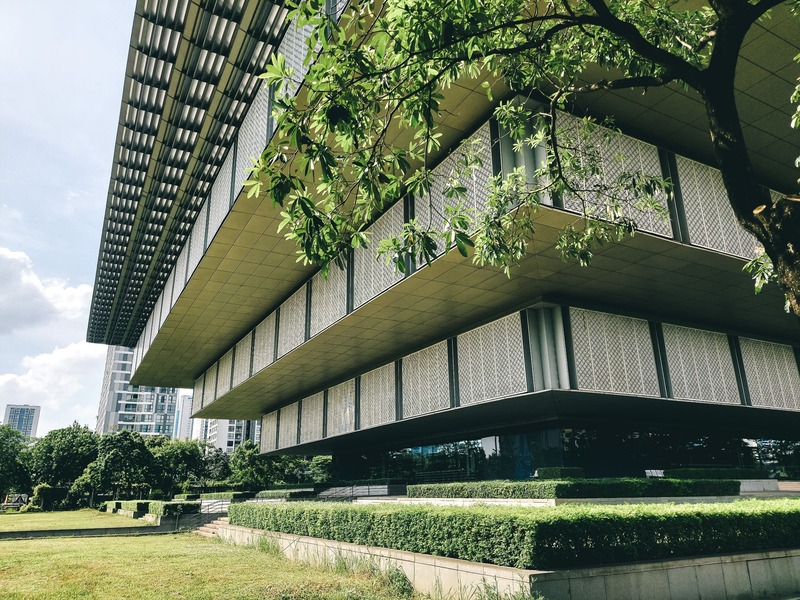
Cultural Experiences You Shouldn’t Miss
The museum has a variety of displays that interest many people. If you like old things, royal history, traditional clothing, and outdoor shows, you’re in for a treat. Here are four special experiences to avoid missing.
Explore The Thang Long Imperial Citadel Exhibition
This enduring exhibition features treasures from Hanoi’s ancient royal years. You can view actual foundation stones, pottery, and items the royals actually used. The exhibition explains why Thang Long was important as Vietnam’s old capital. Maps you can touch let you get a handle on how the citadel lay then. Audio guides in multiple languages fill you in on all the details. The exhibition connects today’s Hanoi to its royal heritage.
Discover Traditional Hanoi Street Life
The street life exhibit features detailed dioramas of historic Hanoi neighborhoods. Tourists can participate in daily life and shopping at markets or in traditional crafts. Real tools, furniture, and home accessories are on display.
Life-sized sculptures illustrate the traditional Vietnamese trades. Lighting and sound effects create a compelling, historical atmosphere. This show captivates all age groups.
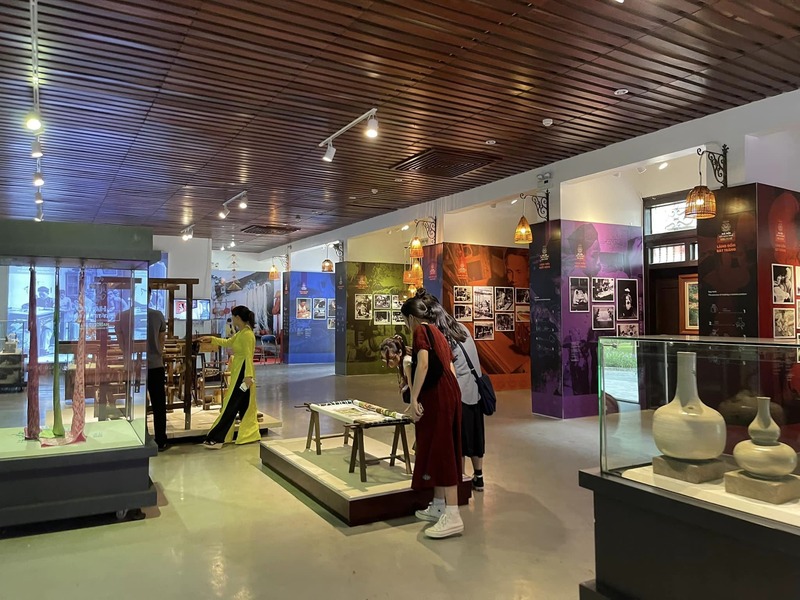
Visit The Contemporary Art Gallery
Today’s Vietnamese artists make good use of the museum’s great temporary exhibition space. These showpieces are modern takes on timeless classics. Visitors may view paintings, sculptures, and multimedia installations.
The gallery provides a peek into Vietnam’s emerging art landscape. Both homegrown and international artists add to rotating exhibitions. Art aficionados find fresh perspectives on Vietnamese culture.
Experience Interactive Digital Displays
Technology has made its way into museums with interactive screens and virtual reality stations. The public wander through 3D reconstructions of old hanoi Digital timelines help to get a sense of the city’s changing nature.
A few of the artifacts are touch screens that display additional information. Virtual tours are awesome for places you can’t visit. These digital conveniences attract younger visitors on board.
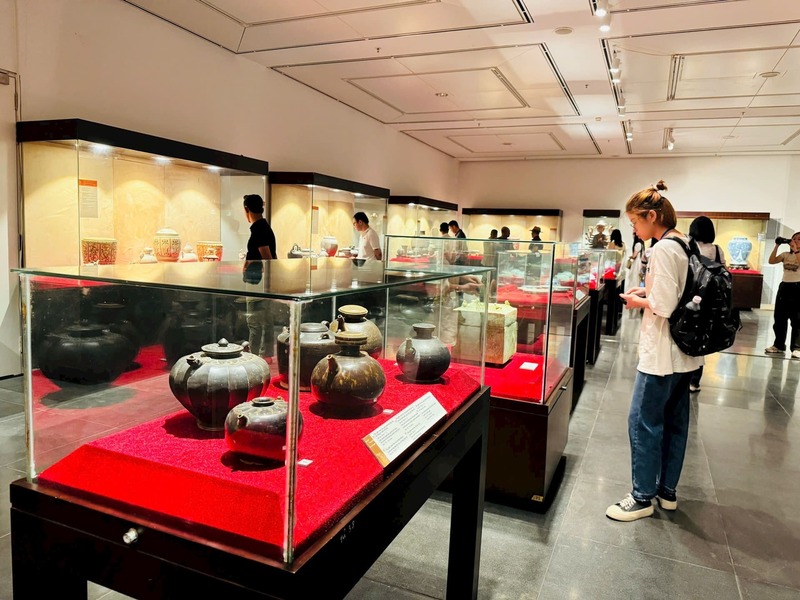
Attend Cultural Performance Events
The museum puts on Vietnamese cultural shows. You can watch water puppetry, listen to traditional music, and see folk dances at these events. Guests get to enjoy real Vietnamese art in a modern place.
Shows happen at different times throughout the year. Big events often line up with Vietnamese holidays and festivals. These performances help people understand the cultural background of what’s in the museum.
Entrance Fee
The Hanoi Museum entrance fee is 40,000 VND per person. However, there are free or discount policies:
- It’s free for kids under 6 years old.
- Students from Vietnam pay less if they show their student ID.
- The elderly can enter for less money when they prove their age.
- Groups of 20 or more people who book ahead get cheaper tickets.
- People who serve or served in the military can enter for less.
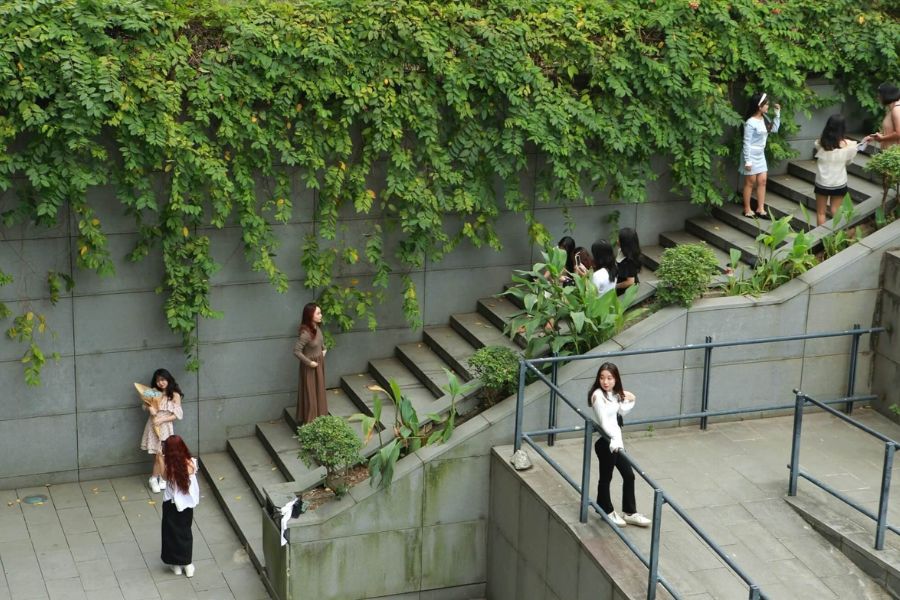
Hanoi Museum Opening Hours
The museum is open at these times:
- Days open: Tuesday to Sunday
- Hours: 08:00 – 11:30 AM and 01:30 – 05:00 PM
- Closed: Mondays
The ideal time to visit the Hanoi Museum is in Vietnam’s dry season, from October to April. This period generally aligns with the best times to visit Hanoi. The weather is generally pleasant for walking and exploring during this time. There is also, in general, good visibility during said months.
You should visit during the morning session on a weekday to avoid larger crowds, particularly tour groups or school visits that might occur in the afternoons or on weekends.
How To Get To The Hanoi Museum
The Hanoi Museum is situated in the Tu Liem District, approximately 8 km to the west of Hoan Kiem Lake. It is easily accessible by several modes of transportation.
- By Taxi or Grab: Ask them to drop you off at “Hanoi Museum, Pham Hung, Vietnam. Most drivers recognize this destination. It’s about 30 30-minute ride from Hoan Kiem Lake.
- Public Bus: On Bus 34 in the Hoan Kiem Lake area. The closest bus stop is directly in front of the museum. Tickets are bought by the bus conductor.
- Motorcycle: The museum has safe, covered parking for motorcycles. Charges apply for parking in peak times. Observe all traffic regulations and use helmets pursuant to the law.
| Transportation Method | Cost | Travel Time |
| Taxi from Old Quarter | 150,000-200,000 VND | 25-35 minutes |
| Grab Car | 120,000-180,000 VND | 25-35 minutes |
| Public Bus | 7,000-10,000 VND | 45-60 minutes |
| Motorcycle Taxi | 80,000-120,000 VND | 20-30 minutes |
| Private Car | Parking: 20,000 VND | 25-35 minutes |
Things To Know Before Traveling To The Hanoi Museum
Before you go, here are a few practical tips to help you enjoy your time at the museum more fully.
- Despite having free general admission, the museum is huge and has massive collections. If you can spend 2-3 hours, you will be able to do a good tour, including the architecture.
- You’re going to do a lot of walking, including inside the museum and potentially out in the park around it. Wear comfortable shoes.
- You can usually take photos for personal use, unless signs say otherwise, but look out for signs indicating that photography is prohibited around certain kinds of exhibits. Flash photography may be disallowed in some areas.
- On hot days, staying hydrated is important. You should bring your water bottle.
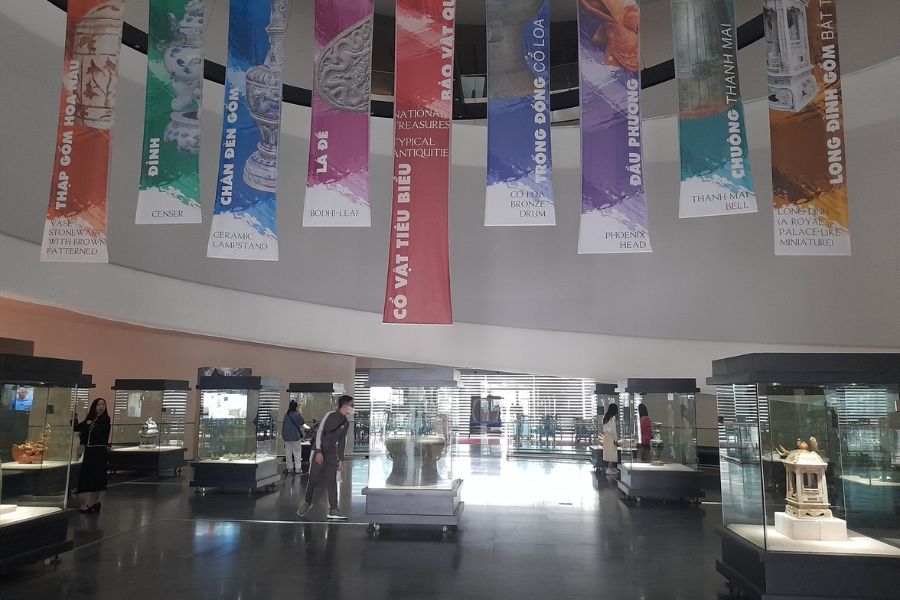
- Unfortunately, you usually can’t eat and drink in the exhibition halls, primarily because of the precious objects in them. A café might have special areas for this.
- Generally wheelchair and stroller accessible, with elevators providing access to various floors.
- The Hanoi Museum is located next to the National Convention Center and My Dinh National Stadium. If you have more time, you could probably swing by these modern landmarks, although they provide distinct experiences.
- Most of the exhibit texts are in Vietnamese and English, so it’s a good way to entertain your overseas friends.
- Large bags may need to be left at the entrance to keep exhibits safe; oversized bags or backpacks must be checked in a coat room or a bag check.
FAQs About The Hanoi Museum
You might have some practical questions to consider before you go. Here are some answers to common questions to help you plan the trip you want.
Is the Hanoi Museum good for kids?
Yes. The museum is open and full of visual displays that children can follow. But you should still watch your kids when they walk between floors or outside.
How much time do I need to see the Hanoi Museum?
The average visit lasts 2 to 3 hours. This will allow time to explore the main indoor exhibits, take in some of the architecture, and walk through the outdoor garden area.
Are there explanations in English in the museum?
Yes. Many of the displays are in Vietnamese and English. This also makes the exhibits easier to understand for foreign visitors.
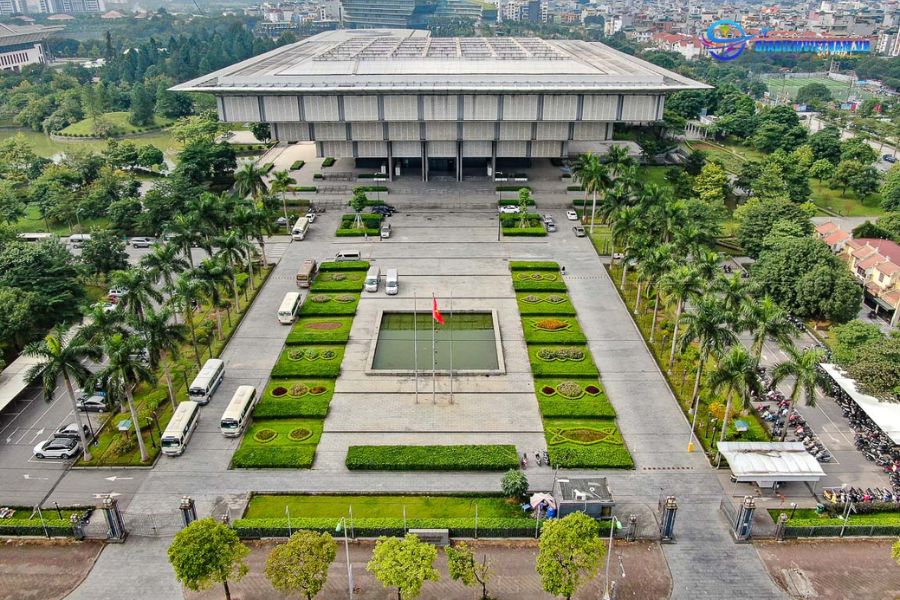
Are there any restaurants at the Hanoi Museum?
The museum does not have a restaurant, but usually has a small café or refreshment area. There are drinks or light snacks to be found there. Food is not permitted in the exhibit halls.
Can I take a guided tour inside the Hanoi Museum?
Currently, the Museum does not have any permanent guided tours in English. But a few independent Hanoi tour operators do visit the museum. If you want to, you can also find your way using the signs and information boards.
Do they sell souvenirs in the Hanoi Museum?
There is also a small gift section inside, or near the entrance. Here you can also pick up books, postcards, and small souvenirs related to Hanoi’s history and culture. The selection may vary.
Final Thoughts: Is The Hanoi Museum Worth Visiting?
If you’re interested in culture and history, the Hanoi Museum is one of the worth-visiting museums in Hanoi. For history, architecture, and discovery lovers, or simply anyone curious about history or looking for something different in Hanoi, the Hanoi Museum is an informative and engaging site that makes it one of the best things to do in Hanoi. Ready to explore Vietnam’s heritage? SeniWorld will make your visit to the Hanoi Museum more memorable – plan your trip there today.




